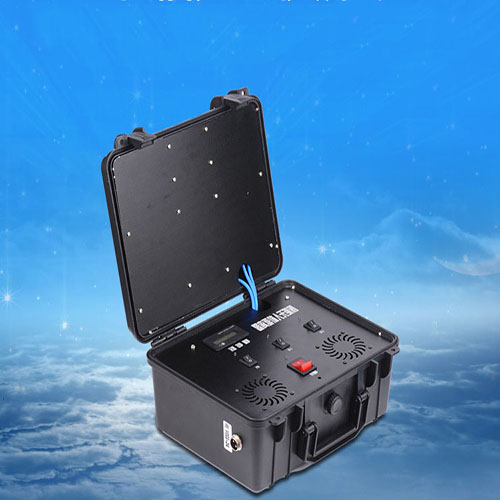Of course, drones are not invincible. There are pros and cons, and without the pilot, the functionality of a drone depends entirely on the functionality of the equipment it carries. First of all, most drones must be controlled by radio, resulting in limited adaptability and basically unable to complete complex actions. Even the most advanced UAVs can rely on computerized automatic control systems to replace the driver for tactical maneuvers. However, no matter how advanced a computer is, it can only operate according to the existing modules. In the face of the ever-changing battlefield situation, the judgment and decision-making ability is not as good as that of an experienced driver. Generally speaking, the flying speed of UAVs is lower than that of ordinary aircraft, and they are often approached for reconnaissance and attack, all of which provide opportunities for anti-UAV drone jammer forces.
Because of the advantages and disadvantages of UAVs compared to ordinary manned aircraft, anti-UAV jammer tactics also have their own characteristics compared to ordinary air defense. Generally speaking, the current UAV jammer mainly have three tactics, which can be called "three axes".
The first aspect is interference blocking. Because the drone is not directly controlled by the driver, its flight is either by radio remote control, or by its own artificial intelligence, but it is mainly based on the remote control. Therefore, by sending a high-power jamming signal to the drone, the remote control signal is suppressed and the sensor, link, and global positioning system of the target drone interfere. This has two effects, one is that the enemy UAV cannot receive instructions from the rear controller, and the other is that it is difficult for the enemy UAV to judge the current position and task, thus causing "at a loss". the effect, and finally make a forced landing or return home. Of course, the interference signal power required by this scheme is very large. This tactic is not suitable when the bandit is far away because the signal attenuation is too great. At the same time, for enemy drones with advanced electronic countermeasures equipment, it is even more difficult to achieve interference and deception.
The second aspect is direct destruction. This is easy to understand. It is to use a variety of weapons to physically kill the enemy drone directly, cleanly, and hundreds. Relatively speaking, UAVs are not as sensitive as manned fighters in responding to attacks, and the defense and counterattack systems usually loaded are also relatively weak, so direct destruction is indeed the solution to the root cause. However, what kind of weapons to use to destroy is also a headache. Because UAVs are usually small and often difficult to detect, this makes traditional anti-aircraft missiles potentially impractical - one is not economical, and the other is difficult to hit. Therefore, it is imperative to develop specialized individual air defense weapons. In the same way, the tactic of expelling drones with ordinary fighter jets is also a big deal, and the corresponding "drone signal jammer" is about a feasible trend.

The third aspect is monitoring and control, which is simply to control the equipment of enemy drones by hijacking radios and other means. Of course, this requires even higher electronic warfare capabilities. It is still possible to deal with general civilian UAVs, while the enemy's specialized military fighter jets require our side to have overwhelming technical advantages to achieve this.
Of course, before the three-way axe, it must first be able to detect enemy drones. If there is no way to capture the shadow of the enemy plane, then it is difficult to use any targeted tactics. At present, the detection of ordinary fighters is mainly based on radar waves and thermal radiation. UAVs are usually small and difficult to detect by radar detection. But at the same time, the remote control signal issued by the rear control has become a new fox tail. Therefore, many UAV jammer systems realize the "discovery" of enemy UAVs by capturing such remote control signals.

